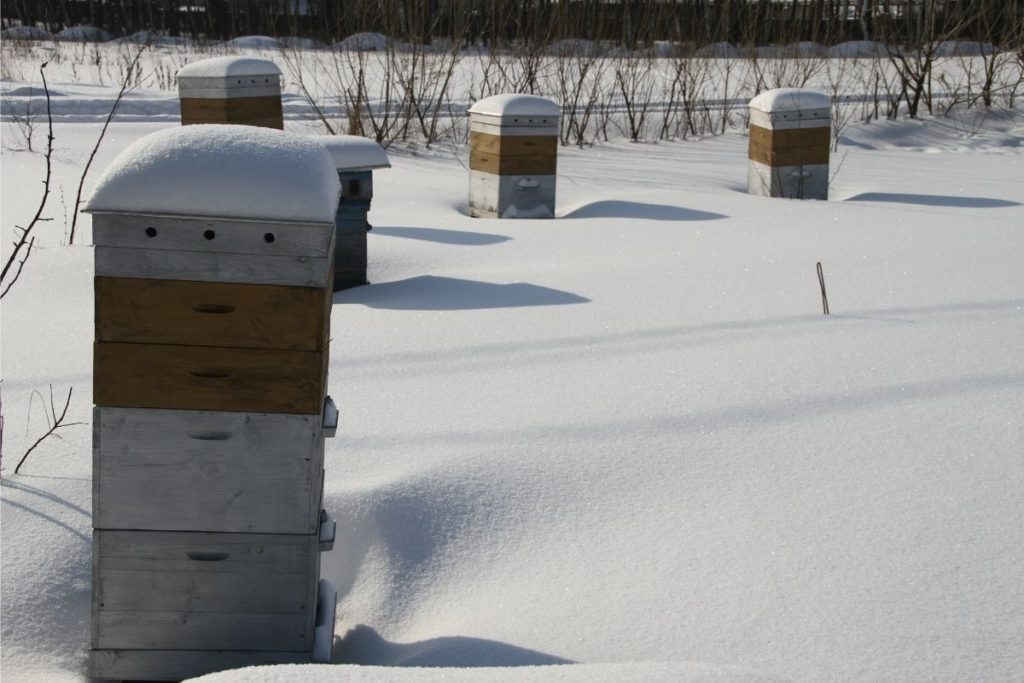Where Do Bees Go in the Winter
For many Brits, the buzzing of the bees means spring has finally sprung. This, however, raises an important question: where do bees go in the winter? Have they been hiding away all this time? Well, unlike us, bees don’t have boilers and double glazing and hot cups of tea to keep them going during the winter months. They have to find other ways to survive, or at least pass their legacy on, so a new hive can make your honey or wind up your pets again next year.

Where Do Bees Go in the Winter? Three Different Places!
Bees in the UK fall into three separate categories. Bees in each category use different overwintering strategies, although warming climates and individual variations in bee behaviour lead to bees in unexpected places.
Solitary Bees
Of the 270 bee species in the UK, solitary bees make up around 245, so the vast majority. The term refers to a wide range of bee species that don’t live in hives or colonies. They’re solitary in nature, but you’re unlikely to see a single one during the colder months, leading you to ask, ‘where do bees go in the winter?’
Like most bees, solitary bees have a yearly life cycle, so the adults die off as winter arrives. However, the female bees work hard to build nests for their eggs, protecting them from the elements during the winter. Solitary bees provide these nests with enough pollen and nectar to feed the pupae when they hatch and even line the nest with a resistant coating to keep it warm and dry. Their eggs hatch as winter ends, then the pupae leave the nest in spring, and the cycle begins again.
Bumblebees
Bumblebees make up 24 of the UK’s bee species, and unlike solitary bees, some do survive the winter. Bumblebee queens hibernate in the colder months, carrying the eggs for the following year’s colony. When the rest of the colony dies off at the end of Autumn, the queen burrows into the soil or tucks deep into deadwood. There, she sleeps the winter off and emerges in the spring.
Honeybees
European honeybees, the only honeybee species in the UK, take a different tactic altogether. Like many of us humans, they huddle together to keep warm. Male honeybee drones die off at the end of Autumn, leaving the female worker bees to stay alive until the spring.
As they huddle around the queen, the centre of the hive stays at around 35 degrees Celsius. They may also leave the hive in shifts on warmer winter days to remove waste and gather extra nutrients.
Why Might You See Bees Out of Season?
Bee behaviour is complex and fragile, and human activity can disrupt their cycle. Digging soil or clearing plants could wake a sleeping bumblebee queen, or dislodge a huddle of honeybees. Human-made climate change also creates random warmer days in winter, which can prematurely trigger hatching bee eggs without the resources to sustain themselves until spring.
How to Protect Bees in Winter
The best way to protect bees involves preventing their disturbance in the first place. Setting aside undisturbed areas, or watching bee behaviour as winter approaches, helps you predict where bees might be and ensure their winter goes as planned. However, once the bees awaken, they struggle to hibernate again. Steps must be taken to safeguard their survival, as they play a huge part in pollinating our ecosystem.
In fact, professional bee removal may be the only way to protect them. The best removal experts transfer bees to local beekeepers in a safe, environmentally friendly way, so the colony survives to see another summer and sleep for another winter.
